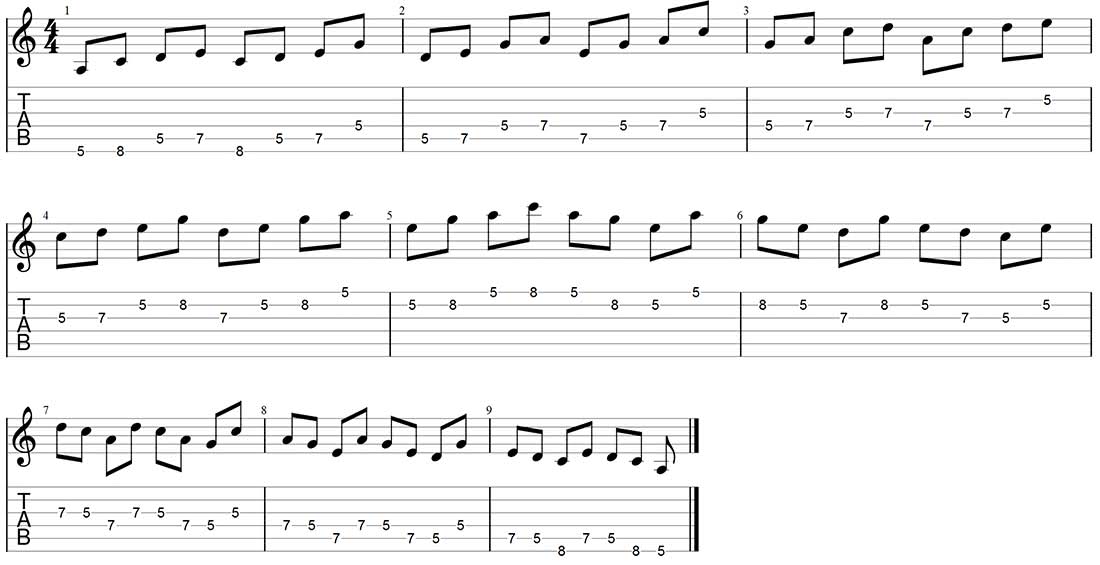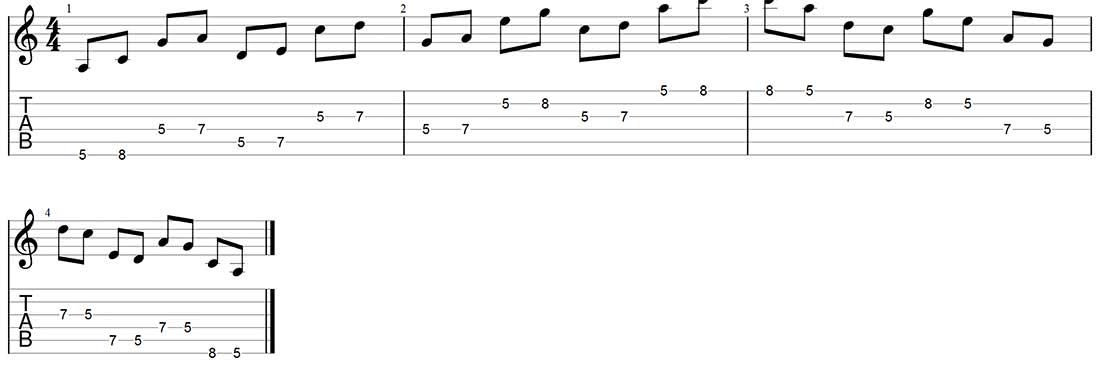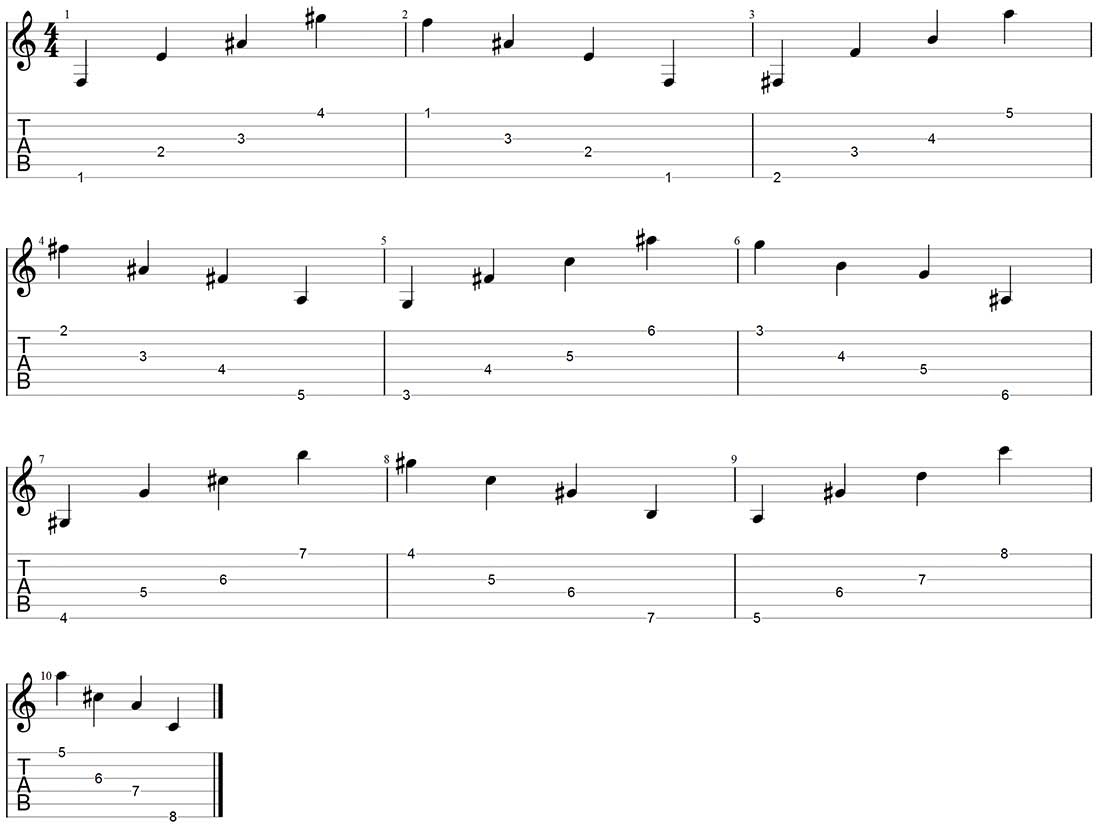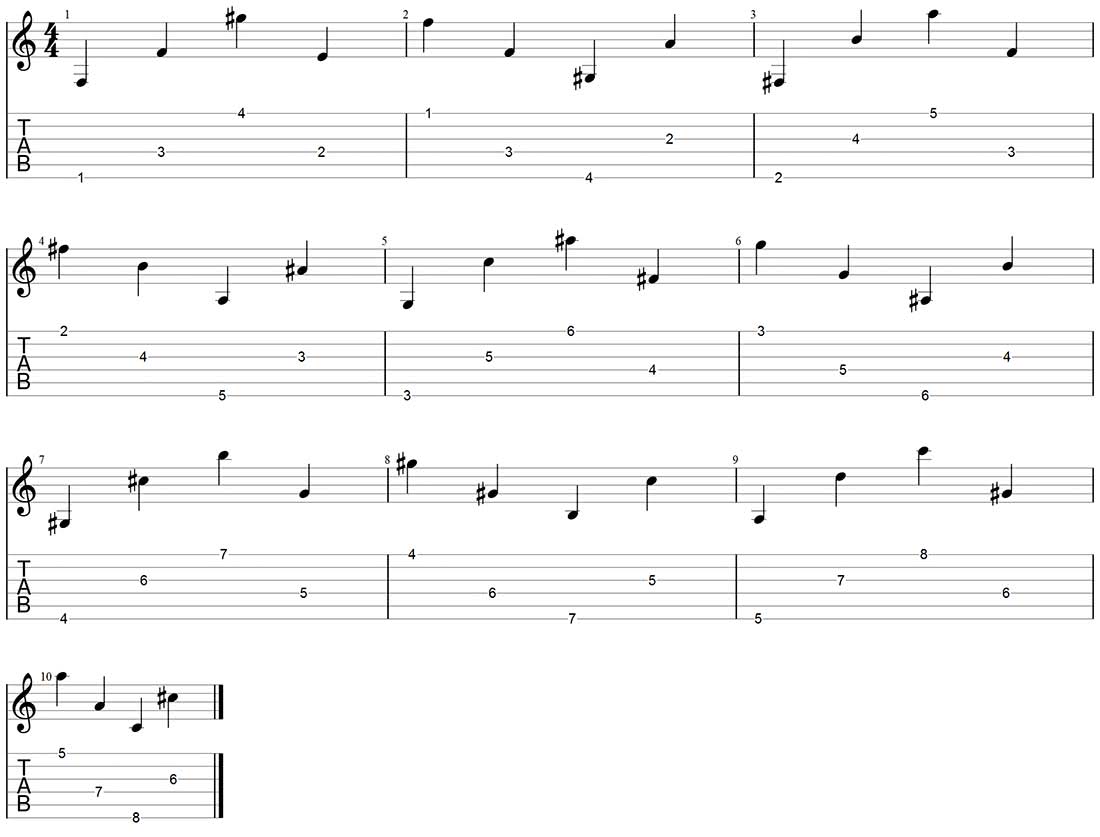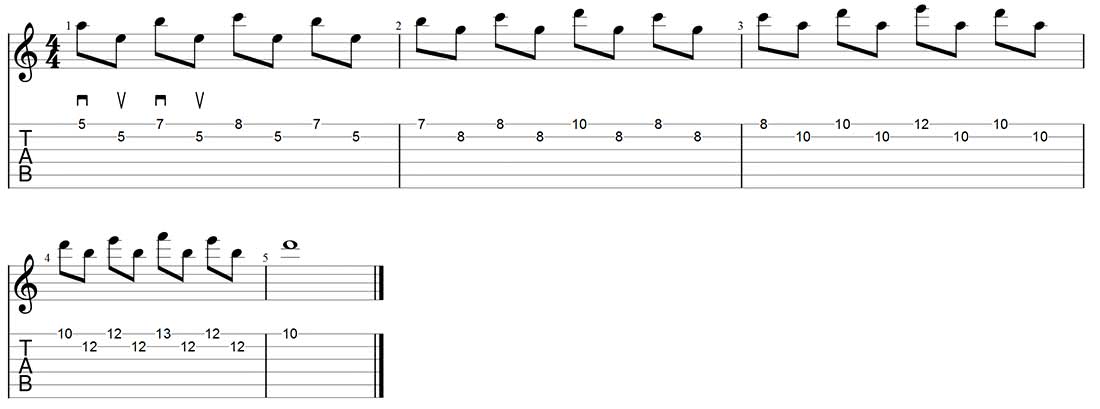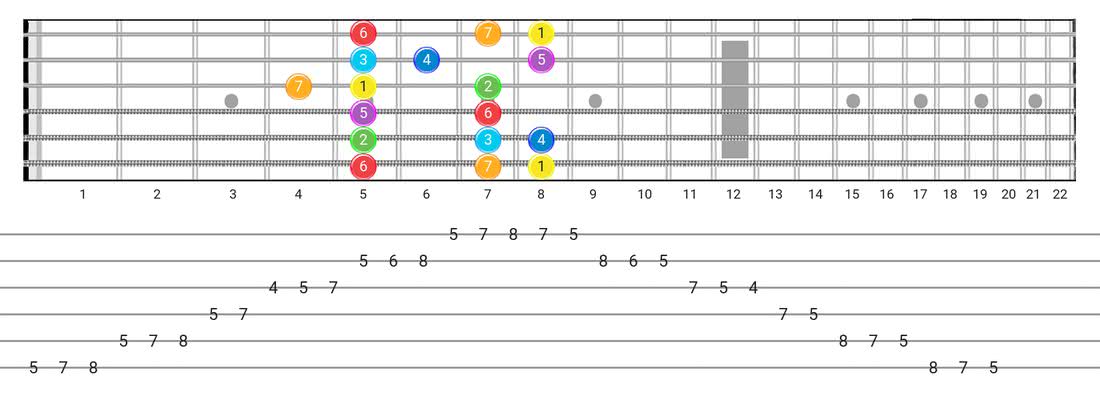10 Alternate Picking Exercises | Pdf + Video Tabs
Exercises to improve picking accuracy and speed

In this new tutorial, we're going to see some of the best alternate picking exercises commonly used by a lot of acoustic and electric guitar shredders to improve their picking technique
(if you need a refresh, check the correct way to hold a pick).
This lesson also provides some useful guidelines for an effective alternate picking practice.
Including these cool alternate picking patterns in your practice schedule will be a great help in developing your left-hand and right-hand synchronization and fluidity when playing scales and arpeggios .
Are you ready to shred? Ok, let's start!
Alternate Picking Video Exercise
This video shows you all the exercises we're going to see on this page.
You find the tabs right below.
Chromatic Picking Exercises
1) The Classic 1-2-3-4 Spider
This is a classic exercise for developing alternate picking precision.
Always follow the rule 1 finger for 1 fret , so you'll want to use the index for the 1st fret, the middle for the 2nd, the ring for the 3rd fret and the pinky for the 4th.
Once you have this pattern under your belt, try to play the figure all over the fretboard, moving the shape 1 fret up each time.
Ideally, you should play the exercise in two ways: one starting with a downstroke, and one starting with an upstroke , and of course, keeping strictly alternate picking for each note of the drill.
This rule applies to alternate picking exercises in general, as inverting the starting stroke forces you to face all the different movement possibilities of the picking hand.
Variations Of The 1-2-3-4 Pattern
You can add variety to the 1-2-3-4 exercise by changing the order of the frets, so you can play the spider with the 1-4-3-2 (index, pinky, ring, middle) or 2-1-3-4 (middle, index, ring, pinky) patterns, or whatever you like.
Try to experiment with this variation.
You can even add a bit of stretch and play patterns like 1-2-3-5 of 1-3-4-5 .
2) 1-2-3-4 Spider with 1 String Skip
Moving across the string is one of the most difficult movements with alternate picking.
The two following exercises are conceived to help you practice this particular movement.
3) 1-2-3-4 Spider with 2 strings skip
This exercise emphasizes the movement across the strings, skipping 2 strings every fret.
Try to play this sequence one time starting with an upstroke, and the second time starting with a downstroke.
You'll notice that it's easier when starting with a downstroke.
This is due to the "inside picking" problem, addressed later in this article.
4) The Deadly Spider
This a challenging drill as it forces you to change string every note.
When it comes to playing arpeggios on the fretboard, it is easy to find this kind of motion.
Picking Exercises On The Pentatonic Scale
The pentatonic scale is a great basis for creating cool alternate picking exercise .
In fact, the pentatonic scale fingerings often have only 2 frets per string, and this allows a great variety of movements that involve more than one string.
On my ebook, Scales Over Chords, you'll find many other scale types with fingerings across all the fretboard.
5) Pentatonic Scale Exercise #1
6) Pentatonic Scale Exercise #2
7) Pentatonic Scale Exercise #3
See also: The Most Effective Exercises To Practice Scales without Sounding Like a Scale
Two cool exercises by John Petrucci
The following exercises are taken from the masterpiece book "Rock Discipline" by John Petrucci , guitar master for Dream Theater.
Like the ones before, you should play these patterns all over the fretboard, shifting the shape one fret up at a time.
These exercises are incredibly useful for developing a great left-hand right-hand synchronization.
8) John Petrucci Exercise #1
9) John Petrucci Exercise #2
The Problem Of Inside Picking
Probably you'll already noticed that it's more difficult picking notes when the pick remains "inside" two strings.
Let's read this quote from John Petrucci about this issue:
One of the more difficult techniques for most guitarists is using alternate picking
through arpeggios since most of the notes within common arpeggio shapes are arranged in a
one-note-per-string manner.
When using alternate picking, there will be a few instances that require the
pick to execute an up-stroke on a lower string after a down-stroke on a higher string.
This "inside the string" picking technique is the most difficult pickstroke to master - John Petrucci -
Rock Discipline
10) Inside Picking Exercise
The following exercise has been created to address the inside picking difficulty.
This time you should practice the exercise by picking exactly in the way shown on the music sheet (do not invert the first pick stroke).
Start with a downstroke and keep alternate picking for all the duration of the exercise.
Does it seem easy?
How to Improve Picking Accuracy
Alternate picking is a cool technique, but it requires particular care to be precise and clean.
Here are some general tips that you should always keep in mind while practicing alternate picking exercises.
For a complete guide on this topic, check our how to improve guitar speed tutorial.
Metronome is your best friend
Always, always, always use a metronome.
The metronome is your best friend. Start at low speed, one note per beat, and try to keep the pace, without mistakes or imprecision.
Also, try to use the same intensity for each pick stroke.
In particular, be sure that your down-strokes and your up-strokes sound equally .
Sometimes try to overshoot your target speed.
If you can play comfortably at 180 bpm, and you want to practice for reaching 190 bpm, try to play the exercise at 200 bpm for a while.
This pushes your hands to work harder.
Then decrease the speed near the target speed (200) and see what happens.
Often in this way, speed is developed more quickly than increasing bpm without overshooting.
Keep the movements as small as possible
The movement of the right hand should be as minimal as possible. This is the so-called " efficiency of motion ".
You should move the pick just to hit the string, up and down, without a large movement.
One useful exercise to internalize this movement is to down-stroke an open string, and suddenly mute it with the pick, then execute an up-stroke and stop on the string.
Then do the same in the opposite direction, play the open string with an up-stroke, and mute it with a down-stroke.
This train your right hand to keep the crossing string action as small as possible.
Record yourself and listen to
This is a simple but invaluable tip given by Guthrie Govan : record yourself and then listen to the track carefully.
Try to spot mistakes or imprecision.
If what you hear is ok, then you can increase the speed of the metronome (that you always use, right?).
While playing, you're not fully aware of the sounds you produce, as you have to care about frets, hands, picking and so forth.
Recording and listening is a great way to get impartial feedback on your progress and performance.
Keep your hands with no tensions
When speed increases, is natural to be a little in tension.
You should have your hands always relaxed, you should not feel a tension in tendons or muscles.
If this happens, decrease the speed just a bit and check if your hands are more relaxed.
Alternate Picking Exercise: conclusions and further resource
I hope this set of picking exercises will give you something to practice on.
As a final tip, I want to say to take your time : it's easy to be fascinated by those incredible shredders out there, but the key to getting speed and precision on guitar is to start very slow , focusing on the present moment, one note at a time, and increasing bpm little by little.
Want more exercises?
This series of guitar scales exercises will help you greatly improve your musicianship.
And here's another great picking exercise, this would be my favorite if I had to choose one only exercise to practice daily.
Lastly, be sure to grab my guitar scale ebook to download for free:
Download the Guitar Scales Pdf Ebook , it contains many fretboard patterns for scales and arpeggios, in 4-frets-note-box and 3 notes per string configuration.
Playing these patterns would be a great exercise for your alternate picking technique and your fretboard knowledge at the same time.





